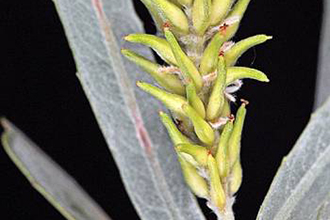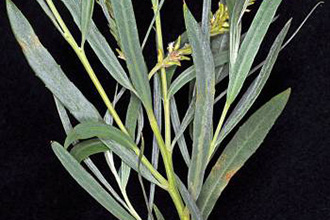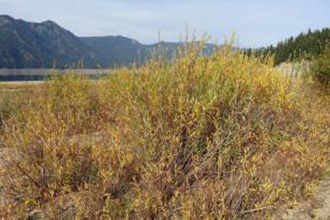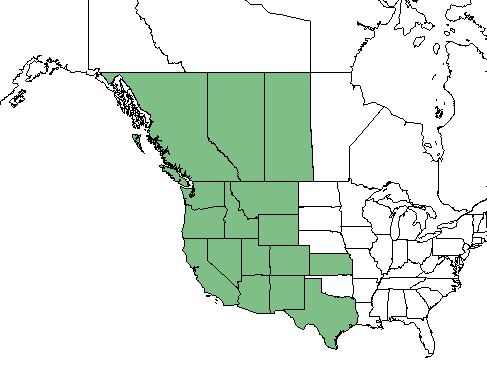Taxonomy: Kingdom - Plantae (plants). Subkingdom - Tracheobionta (vascular plants). Superdivision - Spermatophyta (seed plants). Division - Magnoliophyta (Flowering plants). Class - Magnoliopsida. Order - Salicales. Family - Salicaceae (Willow family). Genus -Salix L. Species - Salix exigua Nutt.
Ecology: Narrowleaf willow ( Salix exigua) may form extremely dense stands, essentially excluding other shrub species. In some areas, narrowleaf willow develops more open, scattered communities with greater shrub diversity. Common associates throughout the range of narrowleaf willow are other willows (Geyer willow (Salix geyeriana), yellow willow (S. lutea), Booth willow (S. boothii)), red-osier dogwood (Cornus sericea), northern gooseberry (Ribes oxyacanthoides), black cottonwood (Populus balsamifera ssp. trichocarpa), water birch (Betula occidentalis), Wood's rose (Rosa woodsii), and prickly rose (R. acicularis). In the Great Basin, common associates include sagebrush (Artemisia spp.), Fremont cottonwood (P. fremontii), saltbush (Atriplex spp.), and pinyon-juniper (Pinus- Juniperus spp.). Floodplain associates include saltgrass (Distichlis spicata), sand dropseed (Sporobolus cryptandrus), sedges (Carex spp.), western wheatgrass (Pascopyrum smithii), and little bluestem (Schizachyrium scoparium). Narrowleaf willow frequently occurs with the invasive shrub saltcedar (Tamarix ramosissima, T. chinensis).



